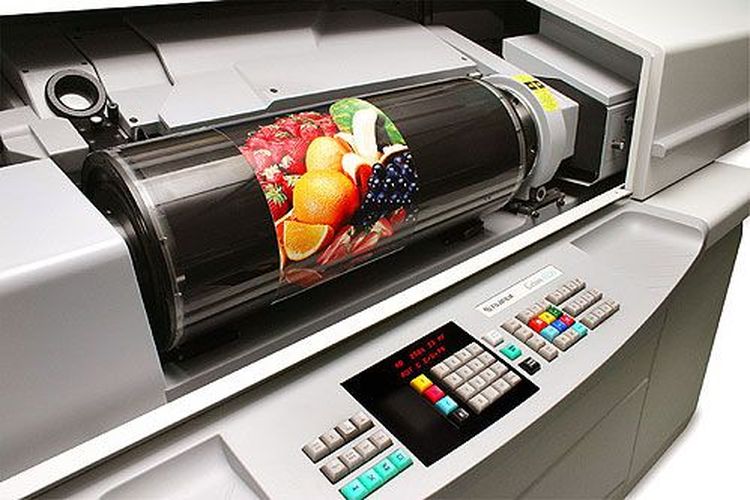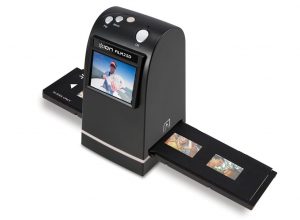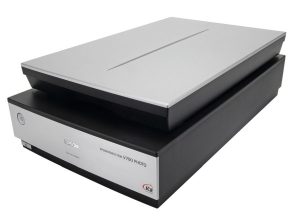Contents
- 1 Early Beginnings: The Drum Scanner Era
- 2 Flatbed Scanner Revolution
- 3 Contact Image Sensor Technology
- 4 Digital Revolution and Mobile Scanning
- 5 Advanced Image Processing and OCR
- 6 AI-Enhanced Scanning Solutions
- 7 Current State and Future Developments
- 8 Technical Specifications and Standards
- 9 Integration with Modern Workflows
Early Beginnings: The Drum Scanner Era
The journey of image scanning technology began in the 1940s with the invention of drum scanners, pioneered by Russell Kirsch at the U.S. National Bureau of Standards. These massive machines, often weighing over 600 pounds, operated by mounting photographic materials on a rotating acrylic cylinder that spun at speeds between 1,000 to 1,200 RPM. The scanning mechanism employed photomultiplier tubes (PMTs) with specialized optics that could detect minute variations in transparency and density across the image surface.
The PMTs converted light into electrical signals through a sophisticated process of photon multiplication, achieving remarkable signal-to-noise ratios of 90dB or higher. This technology enabled drum scanners to capture an exceptional dynamic range of up to 4.0D, preserving subtle details in both shadows and highlights that other scanning methods couldn’t detect. The precision of drum scanners was further enhanced by their oil-mounting process, where a thin layer of optical-grade oil was applied between the transparency and drum surface to eliminate Newton rings and surface imperfections.
Early drum scanners, such as the Hell Chromagraph DC300, achieved resolutions of up to 12,000 DPI, setting unprecedented standards for professional image reproduction. These devices utilized three-color separation techniques, employing red, green, and blue filters in conjunction with the PMTs to capture full-color information. The scanning process was methodical, often taking 20-45 minutes per image, but the resulting quality established drum scanning as the gold standard for high-end print reproduction throughout the 1960s and 1970s.
| Drum Scanner Specifications | Typical Values |
|---|---|
| Maximum Resolution | 8,000-12,000 DPI |
| Dynamic Range | 3.8-4.0D |
| Scanning Speed | 20-45 minutes/image |
| Drum Rotation Speed | 1,000-1,200 RPM |
Flatbed Scanner Revolution
The 1980s marked a significant shift with the introduction of flatbed scanners. These devices utilized Charge-Coupled Device (CCD) technology, replacing the bulky drum mechanism with a moving sensor array. Early flatbed scanners typically offered resolutions between 300 and 600 DPI, making scanning technology accessible to offices and homes.
| Scanner Type | Resolution Range | Primary Use Case | Era of Dominance |
|---|---|---|---|
| Drum Scanner | 8,000-12,000 DPI | Professional Publishing | 1940s-1980s |
| Flatbed CCD | 300-2,400 DPI | Office/Home Use | 1980s-2000s |
| Contact Image Sensor | 600-4,800 DPI | Portable Scanning | 2000s-Present |
Contact Image Sensor Technology
The advent of Contact Image Sensor (CIS) technology in the late 1990s brought further miniaturization. CIS scanners use arrays of LED lights and sensors placed close to the scanning surface, enabling compact designs and reduced power consumption. This technology powers many modern portable scanners and multifunction devices.
Digital Revolution and Mobile Scanning
The smartphone era introduced powerful mobile scanning capabilities. Modern devices combine high-resolution cameras with sophisticated image processing algorithms, enabling instant document digitization. These solutions typically achieve resolutions of 200-300 DPI, sufficient for most document scanning needs.
Advanced Image Processing and OCR
Modern scanning technology incorporates sophisticated Optical Character Recognition (OCR) capabilities. Contemporary OCR systems can achieve accuracy rates exceeding 98% across multiple languages and font styles, transforming scanned documents into editable text while preserving formatting and layout.
AI-Enhanced Scanning Solutions
Artificial Intelligence has revolutionized scanning technology through advanced features like:
- Automatic document classification and sorting
- Real-time image enhancement and correction
- Intelligent noise reduction and artifact removal
- Contextual data extraction and categorization
Current State and Future Developments
Contemporary scanning solutions combine multiple technologies, offering features like 3D scanning, augmented reality integration, and cloud connectivity. Machine learning algorithms continuously improve scanning accuracy and automation, while emerging technologies like quantum sensors promise even higher precision and speed.
Technical Specifications and Standards
Modern professional scanning systems typically support:
- Resolution ranges from 600 to 9,600 DPI
- 48-bit color depth processing
- Multiple file format outputs (TIFF, PDF/A, JPEG2000)
- Automated workflow integration capabilities
- Advanced color management systems
Integration with Modern Workflows
Contemporary scanning solutions seamlessly integrate with document management systems, cloud storage platforms, and enterprise resource planning software. These integrations enable automated data extraction, indexing, and routing, significantly improving organizational efficiency and document accessibility.






![How DPI Affects Image Quality: Understanding Scanner Resolution [Complete Guide]](https://yoopst.com/wp-content/uploads/2025/07/dpi-300x220.png)